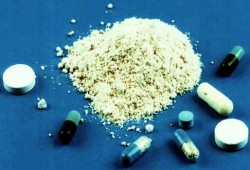

Mr A would provide a urine drug screen (antigen and antibody test) specimen, which would then be sent out for a confirmatory GC/MS test.

The patient had been doing fairly well clinically and was compliant with his visits. Other medications included gabapentin, lamotrigine, lithium, and olanzapine. Mr A is a 51-year-old white man with a past psychiatric history of bipolar disorder and opioid use disorder who presented to the clinic on buprenorphine/naloxone (8-2 mg film, 3 films sublingually daily) maintenance therapy. Such results could have clinical implications for physicians.Ĭase report. Periodically, GC/MS tests can have false-positive results. Most of these drug tests are for screening and are followed by confirmatory gas chromatography/mass spectrometry (GC/MS) tests. To the Editor: Urine drug screens are routinely performed by psychiatrists, internists, and family medicine physicians. While amphetamine may be used safely under the supervision of a physician, it still carries risk and should be taken with caution and care.I Have Never Used Methamphetamine, But My Urinalysis Says I Do Both drugs are potent and dangerous with the potential for abuse and addiction. It is recommended that those intending to cease use of amphetamines or methamphetamines do so under the care and supervision of a doctor or with the assistance of a drug rehab program and related therapy. Even if an individual does desire to stop taking the amphetamine-based prescription or to stop using meth, the physical dependence can throw the individual into severe withdrawal. While they have unique and distinct effects on the body, in both cases the body develops tolerance rapidly and more and more of the drug is required to achieve the desired results. These drugs are highly addictive and carry significant potential for abuse. Though amphetamines may boast a variety of medical uses, the prescription drugs containing amphetamines still carry risk as well as unfavorable side effects. The same cannot be said of methamphetamines, for which experimentation can carry grave results. When taken exactly as prescribed and under the careful monitoring of a physician, amphetamine usage can be safe. The effects of use are similar in both amphetamines and methamphetamines including increased pulse, hyperactivity, dizziness, and insomnia, but the effects are more potent with methamphetamines. This release of pleasure chemicals stimulates the brain’s reward center, enticing the user to not only continue use, but, as tolerance develops, to crave ever increasing levels of the drug. The result of both is euphoria because of increased release of norepinephrine and dopamine in the brain. The science behind this may be complicated for the layperson, but the important thing to understand is that methamphetamine, because it has been methylated twice, is significantly faster acting, more potent, and more addictive, and thus quite a bit more dangerous. Methamphetamine is amphetamine double methylated (amphetamine is methylated once). Methamphetamine is more commonly associated with illegal, recreational use and is never prescribed medically. Amphetamines also have the ability to increase focus and heighten mental clarity and thus have been prescribed to treat those struggling with attention-deficit hyperactivity disorder (ADHD) or to help soldiers stay awake during long stints in the field. For example, because amphetamines are powerful psychostimulants and increase metabolism, they have often been incorporated into prescription weight loss aids. AmphetaminesĪmphetamine has a variety of medical uses and drugs containing amphetamines have been prescribed by physicians for a variety of conditions. While the drugs bear similarities, their differences are significant. amphetamine question may be used to try to determine which is more harmful or which is more addictive. How are they different? How are they the same? While the drugs have the same chemical base, the process they undergo drastically alters the effect they have on the body. The similarity in names suggests that there is a fundamental similarity between amphetamine and methamphetamine.


 0 kommentar(er)
0 kommentar(er)
